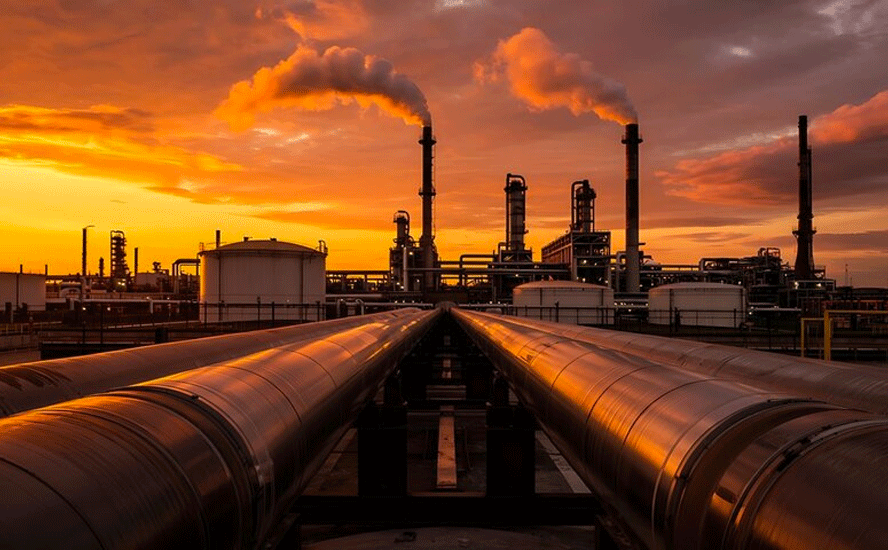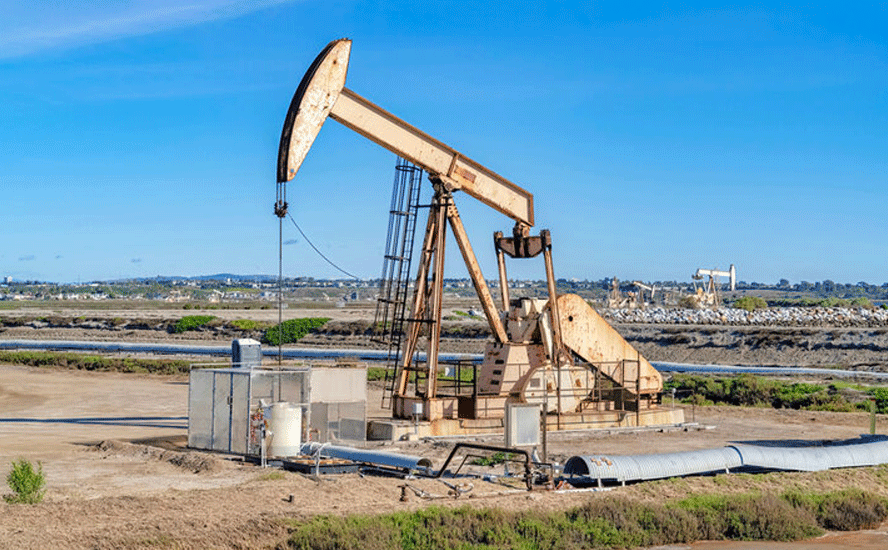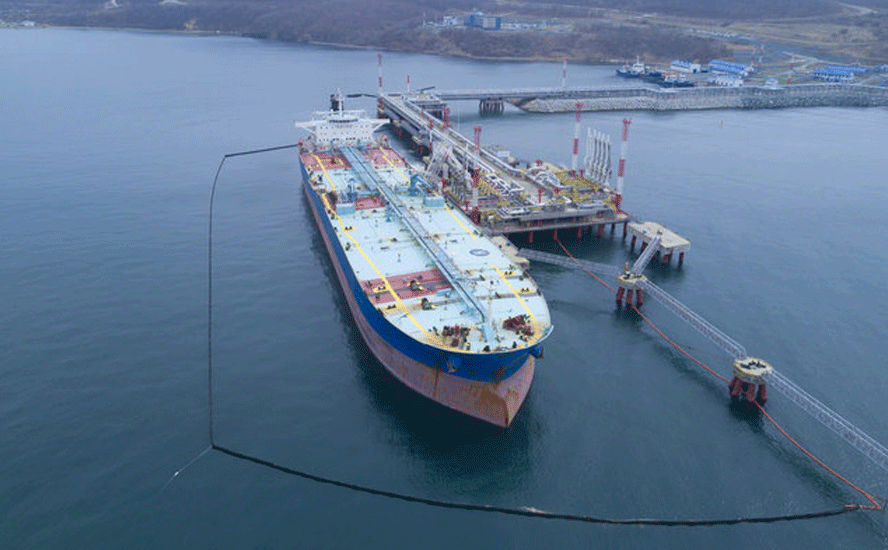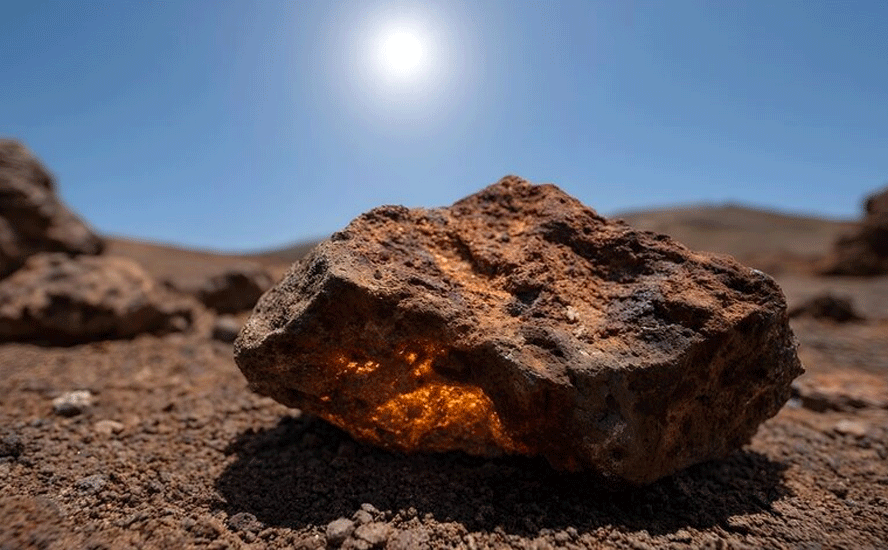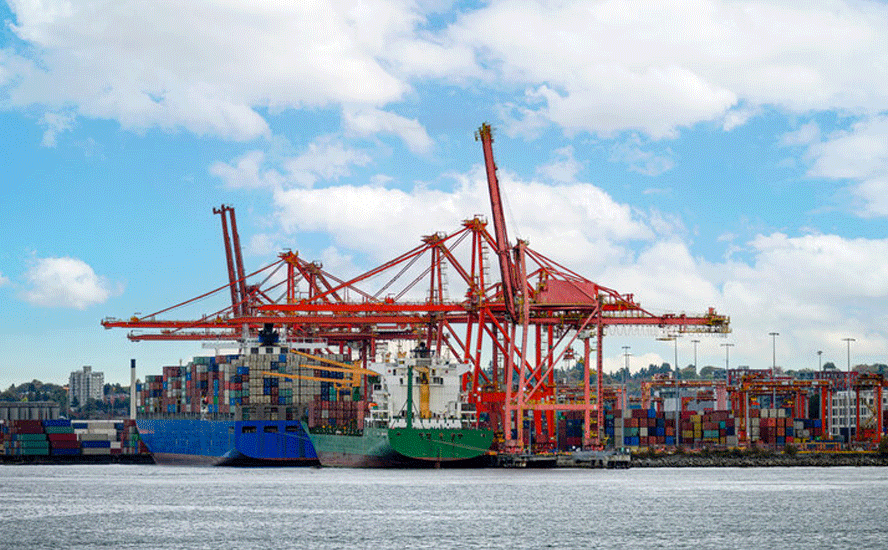Plugging the fossil fuel energy gap with nuclear
2021.03.20
While there is little we can do to prevent climate change, the Earth is going to continue to warm till it isn’t, we can do our part in cleaning up the atmosphere by reducing our fossil fuel usage.

The modernization and electrification of our global transportation system will require a change hitherto unprecedented in the history of civilization. Not even the shift from horse and buggy to the crank-start Ford Model T can compete with what it will take to electrify the billion-plus cars on the planet’s roads, and eventually put a complete stop to noxious tailpipe emissions resulting from the combustion of gasoline and diesel fuel, that are poisoning the air we breathe.
We also need to drastically reduce our output of carbon emissions by switching from fossil-fueled power generation to renewable energies (solar, wind, hydro) and nuclear, while continuing to electrify the global transportation system, including cars, trucks, trains and construction equipment.

Nuclear power today
Uranium is the fuel needed to create the nuclear reaction that can either create nuclear power or nuclear weapons. To make nuclear fuel from uranium ore, the uranium is first extracted from the rock, then enriched with the uranium-235 isotope, before being made into pellets that are loaded into assemblies of nuclear fuel rods. In a nuclear reactor, several hundred fuel assemblies containing thousands of small pellets of uranium oxide are in the reactor core. The nuclear chain reaction that creates energy starts when U-235 splits or “fissions”, which produces a lot of heat in a controlled environment.
In a conventional nuclear reactor, the pressurized water reactor, fuel rods containing uranium pellets are placed in water. Visualized as a giant kettle, the heat generated from the pellets boils water to create steam, which turns turbines to generate electricity. But the downside of conventional nuclear power stations is the nuclear reaction also produces plutonium, which is highly radioactive, and other wastes, causing a problem for disposal. Stronium-90 and cesium-137, contained in nuclear waste, have half-lives of about 30 years, but plutonium-239 takes 24,000 years to fully decay.
When it works well, the nuclear reaction is an efficient form of energy creation. One uranium pellet weighing just 6 grams produces the same amount of energy as a tonne of coal. But it also leaves a lot of radioactive waste that needs to be incinerated, encased in concrete, or buried deep underground for centuries.
When nuclear power goes wrong, the fallout is catastrophic. Nuclear meltdowns like Chernobyl in Russia, Three Mile Island in the US, and Fukushima in Japan are burned into the collective consciousness and serve as constant reminders of the dangers of nuclear power that drive the anti-nuke movement.
While nuclear energy generation will never be without risks, proponents argue these are manageable and small compared to the risk of increased greenhouse that are warming the planet. Because nuclear does not require the burning of fossil fuels, it is always in the mix of energies required to make the transformation from an oil-based economy to one where renewable and nuclear energies make up a larger proportion of our global electricity supply.


However, nuclear power today suffers from an ideological schism. On one side are those who see nuclear as the best way to produce carbon-free electricity at the scale required to power future generations. Others say the dangers involved in nuclear fission and the high costs of nuclear energy, will eventually mean the abandonment of the technology in favor of renewables or natural gas.
At AOTH we are squarely positioned in the first camp. In a previous article we showed that replacing fossil fuel-generated power — coal, oil and natural gas — 100% with solar and wind is an untenable proposition. Our research showed it would mean building over 60,000 five-hundred-megawatt solar plants, or greater than 120,000 wind farms of the same power capacity.
Nor can we bank on natural gas to see us through to a carbon-free future.
Natural gas is mostly methane (CH4), a potent greenhouse gas that the Intergovernmental Panel on Climate Change says is 86 times more damaging than CO2 over a 20-year period.
Fugitive methane emissions run from 1% to 9% of total natural gas life cycle emissions. For natural gas power plants to be cleaner than coal, methane emissions over the plant’s life cycle must be below 3.2%, according to one study.
Most methane leaks come from flaring excess NG instead of putting it into a pipeline. The journal ‘Nature’ published a study saying that the US oil and gas industry emits 13 million tonnes of methane a year, which is 60% higher than the EPA’s estimate.
Liquefied natural gas (LNG) is often touted as clean power but we know it is anything but.
Extracting natural gas through hydraulic fracturing, transporting it to a terminal, and then super-cooling it for transport in tankers, is not clean energy; in fact, it may even be dirtier than coal.
To turn it into liquid form, the gas must be cooled to 163 degrees below zero. To do that requires a great deal of power, with massive compression units running 24/7. Where does that power come from? In most cases, the same fracked natural gas is used to run the compression units, which pretty much defeats the purpose of LNG as “clean”.
According to a study by Wood Mackenzie, LNG will be the biggest source of carbon emission growth by 2025 – due to strong demand from Asian buyers.
Regrettably for nuclear proponents, however, conventional nuclear technology is not being pointed to as a way out of the global warming dilemma. Despite continued growth in global carbon emissions and the safe operation of hundreds of nuclear power plants worldwide, the number of reactors is decreasing, not increasing. Continued shutdowns in Europe and North America meant seven less reactors were operating in 2019 compared to 2018. As a result of the Fukushima disaster, Germany has promised to close all nuclear plants by 2022. Italy became the first country to completely shut down their plants.
In 2019, nuclear energy represented just 10% of the global energy mix, far less than coal, at 36%, and natural gas, at 23%. In fact, nuclear’s 10% share of the total energy pie has dropped from 17% in 2000. In the United States, the largest nuclear consumer in the world, low natural gas prices have turned utilities off nuclear power and are a disincentive for investing in aging nuclear plants.

This, in a nutshell, is the challenge nuclear power faces: it is a necessary component of future energy needs, but without a groundswell of public opinion behind it, and billions of dollars in new investment to replace decrepit conventional nuclear facilities, its impacts may be limited. According to the International Atomic Energy Agency, via S&P Global Intelligence, it would take far more investment worldwide in nuclear plants than is currently expected for nuclear power to significantly limit climate change.
Building new/ replacing conventional reactors
Having said that, there is a concerted effort happening to build new nuclear reactors and replace existing ones. Under the World Nuclear Association’s Harmony Programme, a framework of action for the nuclear industry, 1,000 GWe (gigawatts electrical) of new nuclear capacity is planned by 2050, providing 25% of the world’s electricity from the current 10%. Reaching this goal would require adding 25 GWe per year from 2021, then escalating to an annual 33 GWe.
To put that into perspective, there are currently 440 nuclear reactors operating in 32 countries plus Taiwan, with a combined capacity of 400 GWe. Last year 12 countries produced at least one quarter of their electricity from nuclear. Among the largest users were France, Slovakia, and Ukraine. The United States has 94 operable nuclear reactors with a combined capacity of 96.6 GWe, which in 2019 produced 20% of the country’s energy. Canada has 19 reactors, generating 15% of its power, with all but one located in Ontario.
The Atlantic Council notes When it comes to nuclear energy, there are two distinct and opposing trends in the world today—in the United States and Europe, aging reactors are being phased out and there is a reluctance to build new ones, while countries like China are on a building spree.
As shown in the table below, about 50 reactors are currently being constructed, most of them in China, India, Russia, and the United Arab Emirates (UAE).

The fact that there is only one reactor in the United States on this list, Vogtle 3 and 4 slated for 20121/2022, indicates how stagnant the US nuclear industry has become. Not only are there few reactors in the works — 2016 saw the first new one enters operation in the country for 20 years — the US is having trouble maintaining what they have got.
While nuclear as mentioned provides 20% of the nation’s power needs, the average plant is about 34 years old. Over the past few years, closures have occurred in New York, Massachusetts, California, Florida and Wisconsin. Five that were operating fine were reportedly shut down prematurely. Those remaining face an uncertain future. The World Nuclear Association estimates more than 10 are currently at risk of closure.
The Trump administration committed to sustaining the US nuclear fleet, and investing in new nuclear technologies, but the economics of keeping US nuclear alive are challenging. Trump’s proposal requiring grid operators to buy power from nuclear plants could reportedly cost US consumers up to $17 billion a year in artificially high electricity bills. Building a new conventional nuclear reactor can cost up to US$10 billion, and the EIA estimates bringing new nuclear power online will be about 25% more expensive than natural gas or wind.
But as our research has shown, NG is a dangerous pollutant that should be phased out as quickly as possible, and wind is an intermittent form of energy that can never function as base-load power in the same way that a nuclear plant can.
The Conversation makes a couple of interesting points in that regard. First, a recent article affirms that nuclear is clearly the country’s most important source of non-carbon electricity. While wind and solar have grown rapidly, they respectively accounted for just 7% and 2% of US electricity generation in 2019, versus 20% for nuclear.
Second, it must be remembered that The US electricity system produces about 500 tons of CO2 for every gigawatt-hour of power generated, and if all of today’s nuclear power were replaced by natural gas, total power sector CO2 emissions would grow by roughly 15%.
Small modular reactors
Facing stiff emission reduction requirements, several countries are starting to re-assess nuclear power and are looking at building plants that are not as expensive, risky, or politically unpalatable as conventional nuclear. Two of these technologies are small modular reactors (SMR) and molten salt reactors (MSR), the latter powered by thorium, instead of uranium.
Generally defined as less than 300 MWe, SMRs cost much less and can be built more quickly than large nuclear reactors, which are typically 1,000 MW and occupy large tracts of land. Interest in small reactors is driven by a desire to reduce high capital costs and to provide power away from large grid systems. They provide enough electricity to power about 200,000 homes, which is about the same as 120 wind turbines or 60,000 solar panels.
SMRs are constructed with prefabricated modules and can be transported by truck or by rail — making them ideal for remote locations where a conventional reactor would not be feasible. Another important advantage is they are less likely to overheat, because their small cores produce less heat than those of large reactors. They also have fewer moving parts, including coolant pumps, which reduces the likelihood of failures that could cause an accident. The fuel, steam and generator will all be in one vessel.
Along with providing electricity to the grid, advanced small reactors may also be able to produce hydrogen fuel or desalinate water.
The first civilian SMR was commissioned in 1955, in Elk River, Minnesota, but the design was shelved when, after just three year’s operating, cracks appeared in its cooling system. In 2000, the Department of Energy funded a project at Oregon State University to study a multi-application light water reactor.
So far, the only countries with operational SMRs are China, India, Russia and Pakistan. Canada, the UK, China, and the US have SMRs in development over the next 10 years.
The Russian government launched a floating 70-MW reactor in the Arctic Ocean, China has two small-scale, high-temperature gas-cooled reactor units in the works, and the Rolls-Royce Consortium in the UK is developing a 440-MW unit, the BBC reported.
In September, the US Regulatory Commission issued its first-ever design approval for small modular reactors, to Portland-based NuScale Power. According to CSIS, the approval is a major milepost for utility companies that have been waiting to apply to the NRC to build and operate NuScale’s design.
The company is reportedly working on a full-scale prototype and says it is on track to break ground on its first nuclear power plant, a 720-MW project for a utility in Idaho, within two years. The US Department of Energy has already invested $317 million in R&D.
The design for NuScale’s SMR is just 23 meters high. According to the BBC, many of the SMR designs in development simply shrink the systems of large-scale nuclear plants, using less [uranium] fuel. More than 125 NuScale reactors could be placed in a traditional reactor’s containment building, though the company plans to deploy them in groups of 12.
In Canada, SMRs are considered ideal for deployment both on-grid and off-grid in remote locations such as mine sites or the oil sands, as well as communities in northern Canada reliant on diesel-fueled generators for electricity. Since 2018, Alberta, Saskatchewan, New Brunswick, and Ontario have all signed an MOU with the federal government to explore SMR technologies.
The technology is most advanced in New Brunswick, where NB Power and the provincial government are trying to create a manufacturing industry centered around mini reactors. Private companies Moltex Energy and ARC Nuclear have each promised to invest $5 million in research and development, on top of $10 million provided by the government. ARC Nuclear is planning a 100-megawatt liquid sodium-cooled power plant, while Moltex’s proposed 150-MW reactor would use molten salt fuel. Molten salt reactors can accept a variety of fuels, including low-enriched uranium, thorium, and depleted uranium, but they are seen principally a promising technology for the thorium fuel cycle, or for using spent light water reactor (LWR) fuel. More on that below.
The potential value of SMRs in Canada is estimated at $5.3 billion between 2025 and 2040. According to Energy Minute, they represent a large potential export market for the country, which has exported Canadian nuclear reactor technology to six countries. Globally, a conservative estimate is $150 billion.

However, the technology is not without its drawbacks. Critics contend that, despite being smaller than traditional reactors, there remains the problem of what to do with the long-lasting radioactive waste. Others predict the economics of SMRs could prove challenging. Though NuScale is offering its first customer a 6.5 cents per kilowatt hour cap as an incentive, in September, the Los Angeles Department of Water and Power accepted a bid from renewables with storage capacity that can deliver supply at 2 cents per kWh.
Molten salt reactors/ thorium
Fukushima has soured the world on nuclear, and started scientists looking more closely at thorium as a “greener” alternative. Some scientists believe thorium is key to developing a new version of cleaner, safer nuclear power.
While conventional nuclear power plants are only able to extract 3-5% of the energy in uranium fuel rods, in molten salt reactors (MSR) favored by thorium proponents, nearly all the fuel is consumed. Where radioactive waste from uranium-based reactors lasts up to 10,000 years, residues from the thorium reaction will become inert within 500.
According to the World Nuclear Association, there are seven types of reactors into which thorium can be introduced as a nuclear fuel: Heavy Water Reactors (PWHRs), High-Temperature Gas-Cooled Reactors (HTRs), Boiling (Light) Water Reactors (BWRs), Pressurized (Light) Water Reactors (PWRs), Fast Neutron Reactors (FNRs), Molten Salt Reactors (MSRs) and Accelerator Driven Reactors (ADS).
The first five have entered operational service at some point, whereas the last two remain conceptual.
A key advantage of MSRs is the reactor cannot melt down, as we saw during Japan’s Fukushima incident, when electric pumps were inundated by the tsunami, failing to cool the fuel rods, which overheated and caused radiation emissions. MSRs can also be made cheaper and smaller than conventional reactors, since they do not have large, pressurized containment tanks, meaning they could be used in factory settings.
Where radioactive waste from uranium-based reactors lasts up to 10,000 years, residues from the thorium reaction will become inert within 500. Nuclear waste (ie. plutonium) from uranium-fueled reactors can be recycled to recover the fissile materials needed to create the nuclear reaction. In this way, thorium reactors not only generate less waste than conventional reactors, but also help to rectify the nuclear waste disposal problem.
Importantly, because plutonium is not created as a waste product in a thorium reactor, it cannot be separated from the waste and used to make nuclear weapons.
The portability of MSRs is another major advantage over the capital-intensive, permanent nuclear power plants we currently have.
To learn about the fascinating history of thorium and its potential for nuclear power generation, read Uranium’s ugly stepsister
Other than the fact that uranium is better than thorium in building nuclear weapons, how do the two nuclear fuels stack up against one another? According to the Royal Society of Chemistry, thorium’s benefits include:
- Thorium is three to four times more abundant than uranium. There is estimated to be enough thorium on the planet to last 10,000 years.
- Thorium is more easily extracted than uranium.
- Liquid fluoride thorium reactors (LFTR) — a type of molten salt reactor — have extraordinary little waste compared with reactors powered by uranium.
- It is more efficient. One tonne of thorium delivers the same amount of energy as 250 tonnes of uranium.
- LFTRs run at atmospheric pressure instead of 150 to 160 times atmospheric pressure currently needed for water cooled reactors.
- Thorium is less radioactive than uranium.

As far as disadvantages, thorium takes extremely high temperatures to produce nuclear fuel (550 degrees higher than uranium dioxide), meaning thorium dioxide is expensive to make. Second, irradiated thorium is dangerously radioactive in the short-term.
Detractors also say the thorium fuel cycle is less advanced than uranium-plutonium and could take decades to perfect; by that time, renewable energies could make the cost of thorium reactors cost-prohibitive. The International Nuclear Agency predicts that the thorium cycle won’t be commercially viable while uranium is still readily available.
Arguably though, the technology exists, so why not develop it?
Examples of companies and countries that are testing thorium’s viability as a nuclear fuel keep growing. In 2017 a Dutch nuclear institute started experimenting with MSRs. NRG, the name of the facility, on the North Sea coast of the Netherlands, launched the Salt Irradiation Experiment in collaboration with the EU. New Scientist reports the researchers will use thorium as the nuclear fuel for the reactor where both the reactor fuel and the coolant are a mixture of molten salt. The experiment will also examine how to deal with the nuclear waste.
In Norway, Thor Energy started producing power from thorium at its Halden test reactor in 2013, with help from Westinghouse. The third phase of a five-year thorium trial operation got underway in 2018.
India’s thorium program is well advanced. The country envisions meeting 30% of its electricity demands through thorium-based reactors by 2050. With large quantities of thorium and little uranium, India wants to use thorium for large-scale energy production. It plans to construct and commission a fleet of 500 sodium-cooled fast reactors – which burn spent uranium and plutonium – in order to breed plutonium to be used in its advanced heavy water reactors that employ thorium as the nuclear fuel.
Indonesia, which has a large amount of thorium contained within monazite, signed an agreement with US company ThorCon Power, to develop molten salt reactors. A 1,000-megawatt thorium-based reactor would be used for base-load power and produce 5 gigawatts a year. The country wants around 20% of its energy mix to come from thorium molten salt reactors by 2050.
In the United States, the Department of Energy is partnering with TerraPower, Vanderbilt and the Oak Ridge National Lab, among others, to build a molten chloride fast reactor — a type of MSR — Oilprice.com reported. Southern Company in 2016 was the second firm to receive a grant from the DOE.
China, seemingly always on the leading edge of new energy, has put aside US$3.3 billion to build two molten salt reactors in the Gobi Desert, the South China Morning Post said. The reactors could spawn new uses for the radioactive element, including applications in warships and drones.
Closer to home, the New Brunswick government has committed $10 million towards building a “nuclear research cluster” that includes a demonstration Stable Salt Reactor – Wasteburner (an SSR-W is suitable for grid-scale power, between 300 megawatts and 3GW) to be powered by spent uranium. SSRs can also use thorium as the nuclear fuel. A full-sized SSR-W is planned for 2030.
Fusion
For decades, the holy grail of nuclear scientists has been a commercially viable nuclear fusion power plant, that would replicate the same process that takes place naturally in the Sun.

Unlike fission, the way we produce nuclear energy now, fusion merges atoms together instead of splitting them. It would create many times more energy than fission, without the use of radioactive materials, meaning no nuclear waste is produced (although neutron bombardment would cause a nuclear fusion plant to become slightly radioactive, these radioactive products are short-lived).
However, because nuclear fusion requires more energy than it produces, it has thus far eluded scientists as a viable energy solution. But they are getting closer, and two of the most advanced projects are taking place in China and Europe.
The way fusion reactors operate, is they superheat hydrogen isotopes up to 150 million degrees Celsius, a temperature as hot as the Sun. This creates plasma, which is compressed by magnets to fuse the hydrogen isotopes together, thereby producing helium and high-speed neutrons that shoot outwards, as described in a recent BBC piece.
In July, ground was broken on assembling the million-component International Thermonuclear Experimental Reactor (ITER), coming shortly after its seven-member nuclear nations successfully installed and assembled the reactor base.
Located in southern France, the 23,000-ton ITER Tokamak is one of a handful of “miniature suns” under development worldwide. Thirty-five years in the making, it will eventually form the planet’s largest “tokamak”, or plasma reactor. In 2025, when the giant assembly project is expected to be completed, with all its core parts installed, fully integrated and ready to produce plasma, the reactor will begin a monthlong process of heating up to 150 million degrees Celsius, with a trio of heating elements pulling a combined 50MW of power, enough for about 10,000 homes. That will bring the plasma to a temperature 10 times greater than the sun’s in the doughnut-shaped reactor to generate as much as 500MW of energy for brief bursts, explains Popular Mechanics.
It will take another five years for full plasma generation, expected in 2030.
Meanwhile, China has just fired up a tokamak of its own. The country’s HL-2M Tokamak reactor will, like ITER in France, employ ultra-powerful magnets to create and fuse hot plasma at temperatures over 150 million degrees C. “The development of nuclear fusion energy is not only a way to solve China’s strategic energy needs, but also has great significance for the future sustainable development of China’s energy and national economy,” said the People’s Daily, the official news outlet of the Chinese Communist Party.
Apparently, China plans to collaborate, not compete, with the ITEL group in France, to develop a reliable form of nuclear fusion. However, it’s hard to imagine Beijing doing anything other than pursuing its own interests, given its history of acquiring offshore resources and locking up supply/ processing capacity of critical metals like rare earths, lithium and cobalt, and President Xi Jinping’s recent proclamation that China plans to achieve carbon neutrality by 2060.
Conclusion
Replacing fossil fuel-generated power — coal, oil, and natural gas — 100% with renewables is untenable. Not only are solar and wind inappropriate for base-load power, because their energy is intermittent, and must be stored in massive quantities, using battery technology that is still in development, they just don’t have anywhere near the energy intensity provided by fossil fuels, or nuclear.
Nor can we bank on natural gas to see us through to a carbon-free future. NG is mostly methane, a potent greenhouse gas that the Intergovernmental Panel on Climate Change says is 86 times more damaging than CO2 over a 20-year period.

Thankfully, we have a third option, and that is nuclear. One uranium pellet weighing just 6 grams produces the same amount of energy as a tonne of coal. One tonne of thorium delivers the same amount of energy as 250 tonnes of uranium. Nuclear fusion is even more efficient but requires mind-blowingly high heat.
It is encouraging to see progress being made on developing a viable nuclear fusion reactor, as well as the development of nuclear reactors that would use thorium instead of uranium as the nuclear fuel.
A key advantage of molten salt reactors is they cannot melt down, as we saw during Fukushima. MSRs can also be made cheaper and smaller than conventional reactors, since they do not have large-pressurized containment tanks, meaning they could be used in factory settings, or in remote communities/ mining/ oil and gas drilling sites. Small nuclear reactors could also be mobilized for these purposes, although their main disadvantage compared to MSRs, is they use radioactive materials which generate nuclear waste.
The problem with these technologies is they are years, if not decades, away from commercialization. We need them now. In 2019 the UN put out a report stating we have just 11 years left to prevent irreversible damage from climate change. By 2040 we might, if we are lucky, have 30% penetration of electric vehicles. EVs and renewable energy are the popular buzz words, but nobody is talking about how we will supply the energy to support our new world economy reliant on batteries instead of carbon matter dug from the ground.
Nuclear has to be in the mix; renewables are not going to cut it; they simply don’t provide enough bang for the buck. Conventional nuclear power has had a good run, but it has a lot of enemies. Despite assurances from the nuclear industry, fear of nuclear accidents is unlikely to go away. The multi-billion-dollar cost to build new water-cooled reactor plants is another mark against nuclear. As Asian countries embrace nuclear power to decarbonize their economies, Europe and North America are ditching it, which imo, is foolish.
We see smaller reactors as the way forward, especially those powered by thorium.
For now, thorium is a theoretical solution to our energy dilemma, but it could be much more than that. A concerted effort to develop thorium reactor technology could provide stable, clean, base-load power for millions, something that is not possible with renewables due to the intermittency factor and the current early stages of renewable battery storage technology. It is safer and better for the environment than uranium and can even use radioactive waste as feedstock for the nuclear reaction, thus killing two birds with one stone. The market is not yet ready for thorium, but when it is, a whole new mining sector and supply chain will be born.
Richard (Rick) Mills
aheadoftheherd.com
subscribe to my free newsletter
Ahead of the Herd Facebook
Legal Notice / Disclaimer
Ahead of the Herd newsletter, aheadoftheherd.com, hereafter known as AOTH.
Please read the entire Disclaimer carefully before you use this website or read the newsletter. If you do not agree to all the AOTH/Richard Mills Disclaimer, do not access/read this website/newsletter/article, or any of its pages. By reading/using this AOTH/Richard Mills website/newsletter/article, and whether or not you actually read this Disclaimer, you are deemed to have accepted it.
Any AOTH/Richard Mills document is not, and should not be, construed as an offer to sell or the solicitation of an offer to purchase or subscribe for any investment.
AOTH/Richard Mills has based this document on information obtained from sources he believes to be reliable but which has not been independently verified. AOTH/Richard Mills makes no guarantee, representation or warranty and accepts no responsibility or liability as to its accuracy or completeness. Expressions of opinion are those of AOTH/Richard Mills only and are subject to change without notice. AOTH/Richard Mills assumes no warranty, liability or guarantee for the current relevance, correctness or completeness of any information provided within this Report and will not be held liable for the consequence of reliance upon any opinion or statement contained herein or any omission. Furthermore, AOTH/Richard Mills assumes no liability for any direct or indirect loss or damage or, in particular, for lost profit, which you may incur as a result of the use and existence of the information provided within this AOTH/Richard Mills Report.
AOTH/Richard Mills is not a registered broker/financial advisor and does not hold any licenses. These are solely personal thoughts and opinions about finance and/or investments – no information posted on this site is to be considered investment advice or a recommendation to do anything involving finance or money aside from performing your own due diligence and consulting with your personal registered broker/financial advisor. You agree that by reading AOTH/Richard Mills articles, you are acting at your OWN RISK. In no event should AOTH/Richard Mills liable for any direct or indirect trading losses caused by any information contained in AOTH/Richard Mills articles. Information in AOTH/Richard Mills articles is not an offer to sell or a solicitation of an offer to buy any security. AOTH/Richard Mills is not suggesting the transacting of any financial instruments but does suggest consulting your own registered broker/financial advisor with regards to any such transactions
Legal Notice / Disclaimer
Ahead of the Herd newsletter, aheadoftheherd.com, hereafter known as AOTH.Please read the entire Disclaimer carefully before you use this website or read the newsletter. If you do not agree to all the AOTH/Richard Mills Disclaimer, do not access/read this website/newsletter/article, or any of its pages. By reading/using this AOTH/Richard Mills website/newsletter/article, and whether you actually read this Disclaimer, you are deemed to have accepted it.




